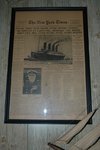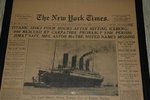Ferdinand Foch
Staff Sergeant
Ok, I can't really believe this. I'll let you folks come to your own conclusions, but I think that the reason for the Titanic sinking has already been established.
Titanic sunk by steering mistake, author says - Yahoo! News
Titanic sunk by steering mistake, author says - Yahoo! News


